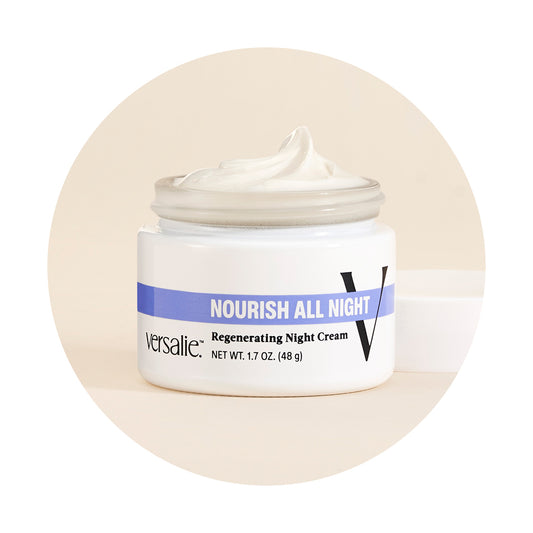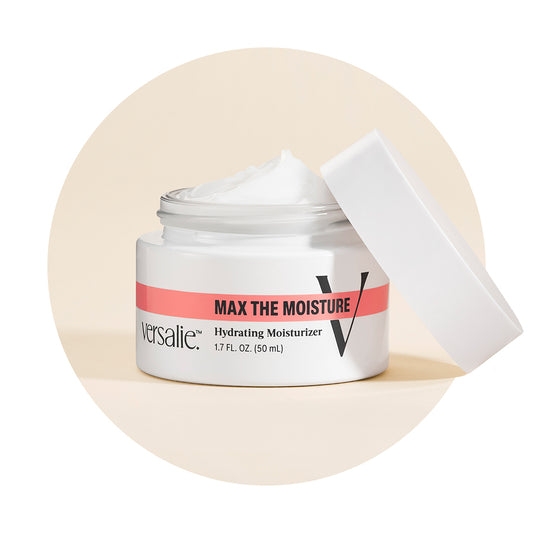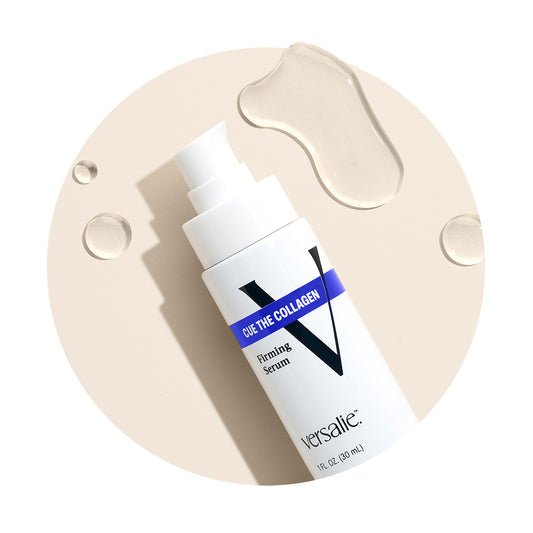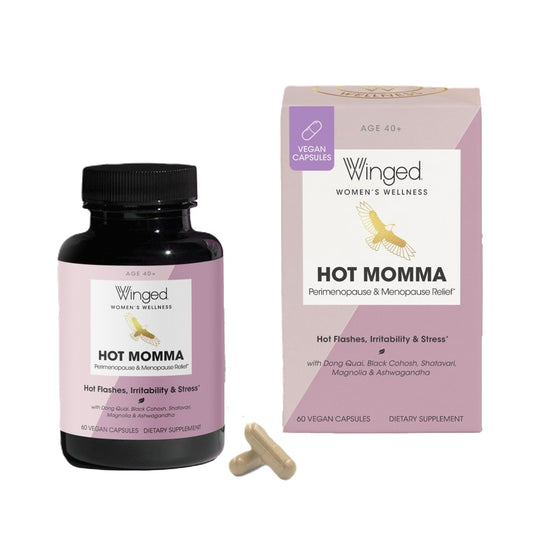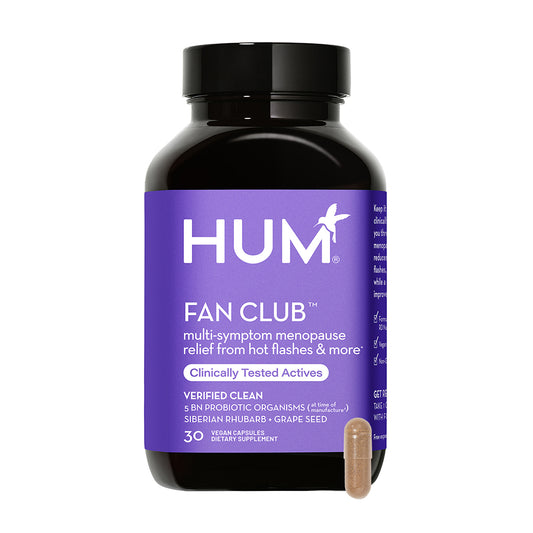You’ve heard it again and again — regular exercise is good for you. It can help lower blood pressure, improve heart health, keep stress at bay, increase energy, and so much more. But what if I told you that highly active people tend to have less severe menopause symptoms compared to those who are less active? Now that alone is a reason to get moving!
As estrogen levels go down during menopause, there's an increase in many symptoms, including hot flashes, night sweats, mood swings, and weight gain. There's also an increased risk of osteoporosis and heart disease. And while there are many ways to cope with these symptoms, according to the National Institutes of Health —
“Exercise is the only noncontroversial lifestyle modification recommended for managing menopausal symptoms.”
What are the basics of exercise?
Let’s start with the basics. When talking about physical activity, there are 2 types of exercises recommended: aerobic exercise and strength training.
For most healthy adults, the Centers for Disease Control and Prevention (CDC) recommend the following:
- Aerobic activity. Get at least 150 minutes of moderate aerobic activity OR at least 75 minutes of vigorous activity each week. Moderate exercise includes activities like brisk walking, biking, swimming, and mowing the lawn. Vigorous activities include exercises such as running, hiking, tennis, and heavy yard work.
- Strength training. Do strength training exercises at least two times a week. You can use weight machines, free weights, or resistance bands for these exercises.
The key to all exercise is to spread it out throughout the week. Also, keep in mind that even small amounts of physical activity can be helpful. Being active for short periods throughout the day can have long-term health benefits.

What are the benefits of exercise during menopause?
Let’s dive into some menopause-specific symptoms that regular physical activity can help.
Weight management
A common concern during menopause is weight gain. The change in hormone levels and the natural effects of aging can lead to an increase in abdominal fat, sometimes called “menopause belly”, and a decrease in muscle mass. The primary reason for this is a natural decrease in the size and number of muscle fibers in your body. In addition, fatty tissue deposits often replace the muscle tone lost from reduced hormone production.
Metabolism is the rate at which your body burns calories. Less muscle mass can lead to a slower metabolism. Muscles use more energy than fat, so when you have less muscle, you’re burning fewer calories. Regular exercise can help maintain a healthy weight, or aid in losing weight, by burning calories and helping boost your metabolism.
Emotional well-being
Feeling cranky or sad can also a part of going through menopause. But being active can help. Exercise stimulates the release of endorphins — hormones in the body that act as natural mood lifters. Endorphins can help alleviate stress and improve mental well-being.
Bone health
A decrease in bone density is another common challenge as you age. Lower bone density can lead to osteoporosis — putting you at higher risk of breaking a bone. Doing weight-bearing exercises like walking, jogging, and weightlifting can help maintain and improve bone density. These activities help stimulate the bones to produce more bone tissue and grow stronger.
Cardiovascular health
Heart disease is often a bigger concern after menopause, also due to the decline in estrogen levels. Regular exercise can help improve heart health by lowering blood pressure, reducing LDL cholesterol, and increasing HDL cholesterol. It can help strengthen your heart muscle and improve the heart’s ability to pump blood to your lungs and throughout your body.
Hot flashes and night sweats
Research shows that physical activity may help ease your experience with hot flashes and night sweats. During menopause, the decrease in estrogen can affect your hypothalamus. This part of your brain helps control body temperature. Exercise can help control body temperature by sending signals to the hypothalamus to cool the body down. The exact reason isn't fully understood. In fact, studies have shown that regular physical activity can help reduce moderate to severe hot flashes. A good reason to keep moving.
Improved self-esteem and body image
Menopause can lead to changes in overall body shape, specifically a change in where fat on your body is located. The lower estrogen levels, along with the decline in muscle mass, forces fat to accumulate more in the abdominal area, leading to the infamous "menopause belly”. For some, this can affect their self-esteem and body image.
However, remember there’s a difference between the feelings you have about your appearance and the way you feel in your body. Staying active helps boost self-confidence by improving body strength, tone, and overall fitness. Especially as you're going through all the changes menopause can bring, physical activity can also:
- Help you feel more in control of your body.
- Help you focus on the power and strength your body has.
- Start to feel more comfortable in your body.

The do’s of menopause exercise
How much and when?
The CDC recommends that adults get at least 150 minutes of moderate-intensity aerobic exercise each week. They should also do strength training exercises 2 or more days a week. While that sounds like a lot, you don’t have to do it all at once. You can spread out your activity throughout the week and break it up into smaller chunks of time that work for you.
Start slowly
If you're new to exercise or haven't been active for a while, start with low-impact activities like walking, swimming, or gentle yoga. Slowly increase what you’re doing and how much you’re doing it. Some activity is better than no activity at all.
Find enjoyment
Choose activities that you enjoy to stay motivated and stick to your exercise routine. When you enjoy what you're doing, you’ll look forward to your workouts and be more likely to prioritize them in your schedule. Whether it’s dancing, cycling, or hiking, think about what you enjoy.

The don’ts of menopause exercise
Don’t start an exercise program without talking to your healthcare provider
Before starting a new exercise routine or changing up an existing exercise program, especially if you have preexisting health conditions, talk to your healthcare provider to make sure it’s safe and right for you.
If you have joint pain, osteoporosis, back pain or other injuries, don’t do high-impact activities
High-impact activities, like running, jumping, or vigorous aerobics, involve exercises that include jumping and landing. This creates an impact when your feet hit the ground. While there are many pros to doing these activities, there are times when you should avoid them. You need to know your own body’s limits, listen to them, and keep in mind any restrictions healthcare providers have given you to help prevent injury.
If you have joint pain, osteoporosis, back pain, or are prone to injuries due to any other condition, it’s important to choose low-impact activities over high-impact ones. High-impact activities put lots of strain on your bones and increase your risk of fractures and injuries. Instead, focus on low-impact exercises, like walking, swimming, cycling, and gentle yoga to help:
- Maintain bone density.
- Improve balance.
- Reduce the risk of falling.
Just because you’re doing low-impact exercise, doesn't mean you're getting any less of a workout.
Embracing physical activity during menopause does more than just keep you healthy. It can also help with many of the symptoms you may be having. So, lace up your sneakers, grab your yoga mat, or hit the pool — the path to a healthier and happier menopause starts with the first step.


